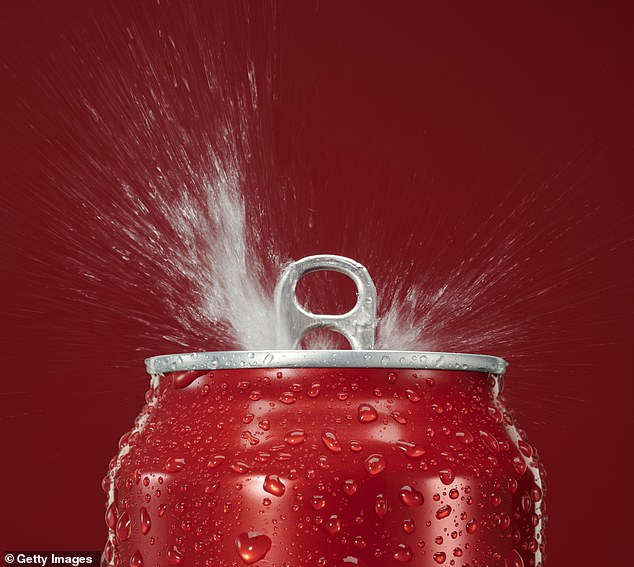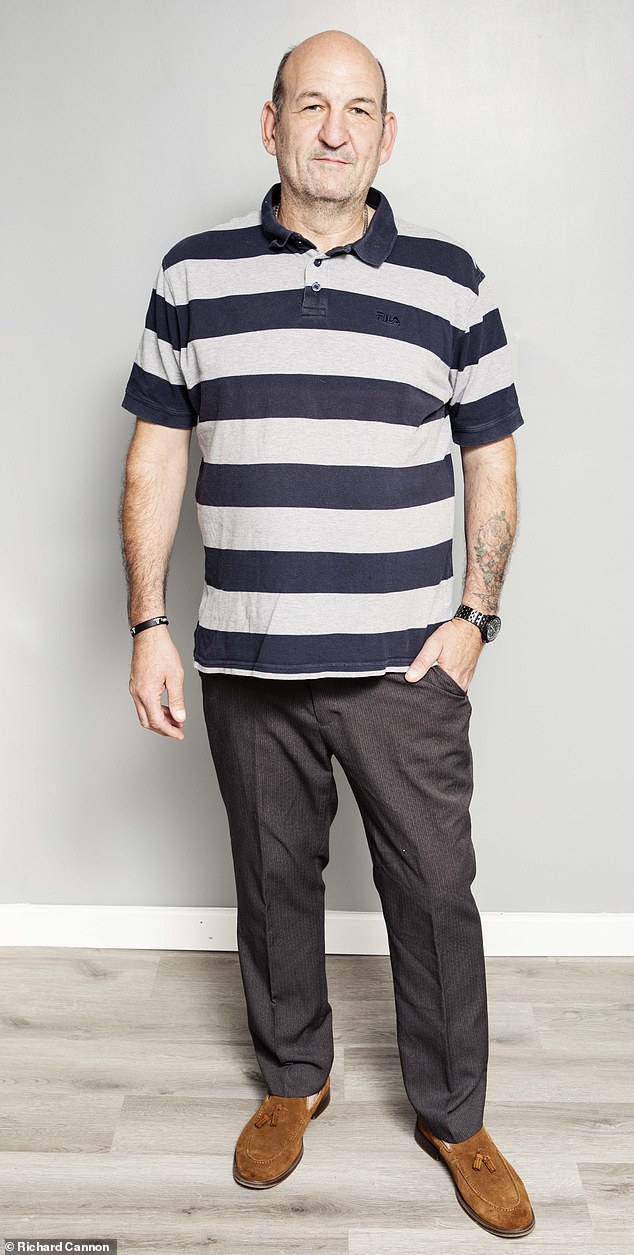Paul Cherry was in his 40s when he felt unwell enough to go to his GP. “I was so tired, I was sleeping all the time and I felt unusually irritable,” the father of two recalls. “It also hurt when I urinated.”
Paul was diagnosed with type 2 diabetes and was initially prescribed metformin to lower his blood sugar levels, then later started taking insulin daily. At the same time, he was also diagnosed with NAFLD (non-alcoholic fatty liver disease), a buildup of fat in the liver that is a common precursor to cirrhosis (scarring of the liver).
As the name suggests, NAFLD is not linked to alcohol consumption – risk factors include a family history of fatty liver and type 2 diabetes. It usually affects people who are overweight, although liver specialists say people of normal weight can also develop it, known as “lean” NAFLD.
Although he was 15kg overweight at the time, Paul was not obese. Instead, his doctors believe he developed type 2 diabetes due to a diet laden with junk food and sugar; he then developed NAFLD as his blood sugar levels became chronically high, damaging his liver.
Paul Cherry used to drink up to three large bottles of soda a day.
However, in the nine years following his diagnosis, Paul failed to make the lifestyle changes his doctors recommended, including getting more exercise and cutting out cakes, sweets and fizzy drinks.
As Paul, 56, admits: ‘I had a weakness for doner kebab and would drink up to three large bottles of soft drink a day, even though I’d been told it was bad for my liver.
“Although I tried to eat healthier, I didn’t take it seriously enough, possibly because I wasn’t actually overweight. I just wasn’t scared enough, but I should have been,” says Paul, a driver for a fleet support company who lives in Stevenage, Hertfordshire, with his wife, Kim, 56, a classroom assistant.
But his soda habit was one of the reasons he became so dangerously ill that he needed an emergency liver transplant last year.
One problem is that you may have mild NAFLD and not know it: it can then gradually get worse until the liver becomes so inflamed and scarred that it results in cirrhosis (with symptoms such as a dull pain in the upper right abdomen, extreme tiredness, weight loss and weakness, sometimes coming on suddenly).
It is also possible to have “a perfectly normal body mass index but a fatty liver,” explains Professor Jonathan Fallowfield, honorary consultant hepatologist at the Royal Infirmary of Edinburgh and spokesman for the British Liver Trust.
These patients are often described as “thin on the outside, but fat on the inside: with fat surrounding the organs, including the liver,” he explains.
Paul had weighed about 16 pounds for most of his adult life, but he didn’t appear overweight given his height of 6’2″. Because he was relatively thin and a lifelong gym-goer, he mistakenly thought he would be the last person to develop liver disease.
Her story is not unique. As a nation, we are failing to look after our livers: liver disease has quadrupled in the past 50 years, according to the British Liver Trust. It is the only major disease whose death rates are rising.
The liver is the largest internal organ in the body, and its job is to break down toxins. But if its function is compromised, toxins build up in the blood, leading to a host of problems, including brain fog. The liver also stores glycogen, which our muscles use as fuel (which is why liver damage can cause muscle weakness).
Problems begin when fat builds up in the liver and eventually causes damage. In severe cases, this can lead to cirrhosis (cases of this disease increased by 21% between 2019 and 2021 alone).
However, if detected early, liver damage can be reversed. While being overweight is known to be a risk factor, studies show that “a poor diet, including ultra-processed foods, also increases the risk, even for slimmer people,” the British Liver Trust told Good Health.
As Professor Fallowfield explains, a number of ‘dietary insults’ can affect the liver, including high sugar consumption, which not only contributes directly to obesity, but also excess blood glucose, which can damage blood vessels and organs.
In an attempt to protect us, the body eliminates sugar and stores it as visceral fat, a particularly dangerous type of fat that accumulates around internal organs.
Professor Fallowfield explains that visceral fat “is associated with higher levels of inflammation, insulin resistance (a precursor to type 2 diabetes) and liver scarring”. “But what is now becoming clear is that you don’t have to drink a lot of alcohol or be obese to suffer liver damage – up to 20 per cent of people with a normal BMI have NAFLD,” he says.
And the number of “lean” people with fatty liver appears to be on the rise, according to a 2023 U.S. study that identified a “subset of individuals… known to have lean NAFLD… who are becoming more prevalent.”

When fat builds up in the liver and causes damage over time, it can progress to cirrhosis.
According to Professor Fallowfield, there is currently no approved treatment for a diseased liver. While so-called liver supplements such as milk thistle and turmeric “won’t hurt you”, he says dietary changes and regular exercise are the “best remedy, in fact the only one”.
He advises switching to a Mediterranean-style diet rich in fish, fruits and vegetables, and being as active as possible.
One problem, he adds, is that people with lean NAFLD are not suspected of having fatty liver disease in the same way as overweight patients; this can lead to a late diagnosis, when the disease has already progressed to a more severe stage.
And sometimes symptoms can appear suddenly, as in Paul’s case. After his diagnosis, he saw a hepatologist twice a year and there was no change in his liver function. Then, suddenly, in mid-2022, he became acutely ill.
He felt tired and irritable, “then I stopped eating and started losing a lot of weight: 20 kilos in three months. I also felt confused and had no control over my muscles.”
Paul also fell constantly, once breaking two ribs. He recalls: “I needed help getting dressed. I didn’t know what was happening to me.
‘One night in 2022 we were at home watching TV when I suddenly felt an unbearably sharp pain in my abdomen. I was rolling around on the floor and thought I was going to die.’
Paul was taken to hospital, where a CT scan revealed problems with his liver. It was so damaged that he was transferred to the Royal Free Hospital in London, where specialists told him he needed an urgent transplant.
She says: “I was very afraid of not seeing my daughter get married (she also has a son) or of not seeing my grandson grow up. Even today, I still get teary-eyed just thinking about it.”
Paul was sent home to wait for a liver donor to become available, but his condition continued to deteriorate.
Deteriorating liver function caused fluid to leak from the veins in his liver, leading to a build-up in his abdomen and legs; every fortnight in hospital, several litres had to be removed. It was, he says, “a bleak and stressful time”.
His ill health caused him to lose his driving licence, he lost his job of 28 years and doctors advised him to make funeral plans. “At 54 I was broke,” he recalls. “Everywhere I went I carried a suitcase packed in case we got a call. My wife, daughter and I cried almost every day.”
But in May last year, on the day of his coronation, he received a call: a liver had been found. He recalls through tears: “I said goodbye to my wife and daughter, just in case I didn’t survive.”
The transplant was a success and Paul has since planted a tree in his garden in memory of his donor (he only knows that the donor was a man).
Paul counts his blessings and has transformed his diet: he now eats whole-grain bread, lean meat, pasta and fruit and vegetables he grows on his new plot, and water instead of fizzy drinks.
He is still a stone overweight but feels “100 times better”, walks to the shops instead of driving and carefully examines food labels to check their sugar and fat content.
“I’m living proof that fatty liver disease can affect people who don’t drink,” he says. “I still have flashbacks to when I was seriously ill. I don’t plan on going back to that stage.”

